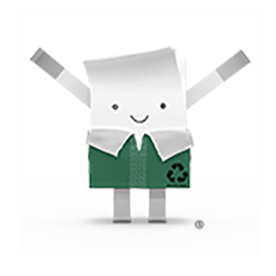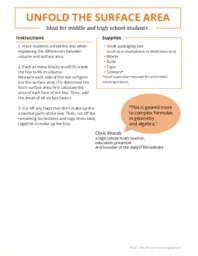
Fragile test tubes, expensive software, sleek kits—fantastic tools for STEM and STEAM learning. But for versatility and accessibility, particularly at a time when schoolteachers are pouring their own funds into classrooms, cardboard and paper can’t be beat.
Interactive, hands-on, low-cost and requiring minimal preparation, STEM problem-solving activities that rely on paper and paper-based packaging can help students supercharge their brains, introducing them to concepts related to gravity, strength-to-weight ratios, volume, geometry and spatial dimensions.
“Teachers everywhere are seeing the benefits of using cardboard in their classrooms, and as schools add ‘makerspaces’ to libraries and classrooms, cardboard is becoming an important part of education,” says Chris Woods, a high school math teacher, education presenter and founder of the dailySTEM website, where he shares videos and blog posts for teachers and students looking for fresh ways to learn about science, technology, engineering and math.
“In my classroom, cardboard boxes—and different types of paper—form the basis of turning abstract math concepts into tangible, hands-on learning,” says Woods, who has been teaching for 20 years in Michigan. Woods uses paper materials to craft experiments with students, and he also encourages them to use paper in more conventional ways. For example, when covering space and astronomy with students, he proposes that teachers keep a “space journal” and have students create their own space tourism posters like those designed by NASA to encourage curiosity about outer space.
Below are three example exercises for high school, middle school and elementary school students that Woods both endorses and uses. These activities are a great way to reuse cardboard boxes or paper before they go into the recycling bin. Because some of these exercises can be group-based, pupils will also learn how to communicate their own comprehension and help each other improve their understanding of the science on the fly.
“From shipping boxes to cereal boxes, cardboard is a free, adaptable and versatile building material for kids to bring ideas and inventions to life,” Woods explains. “Many teachers ask local businesses or their school cafeteria for boxes, cut them into manageable-size pieces and make them available whenever kids feel the creativity flowing.”





